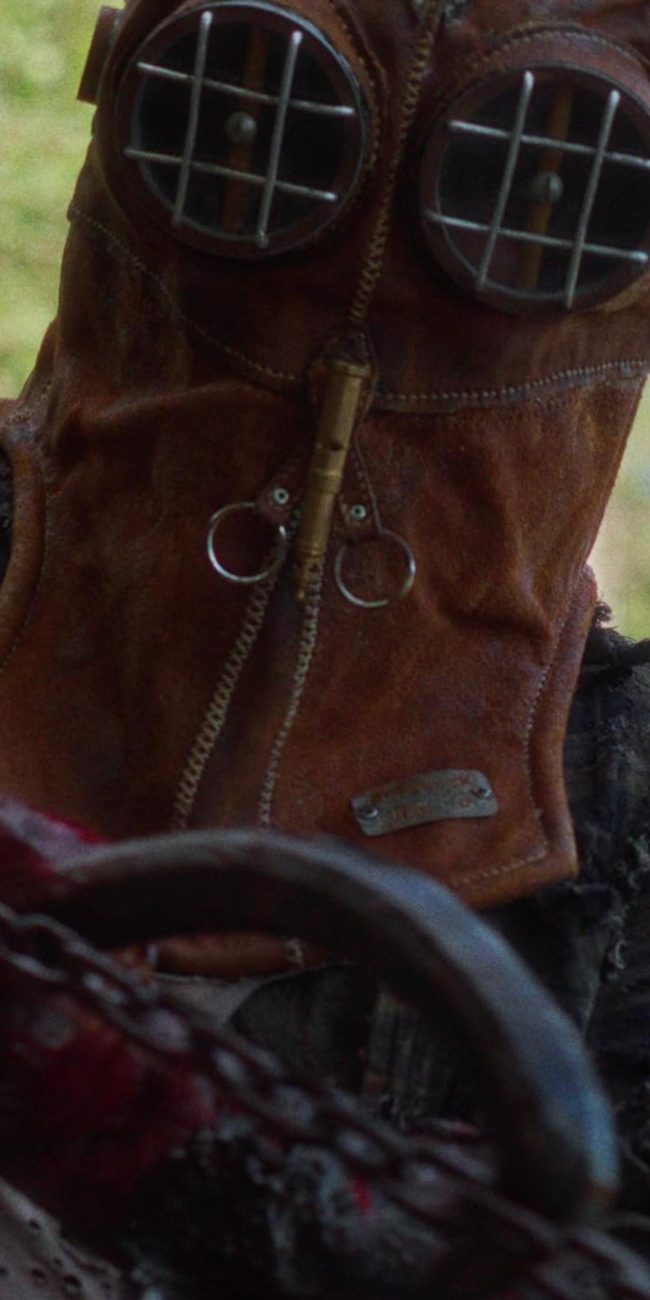A Conversation With Arnaud Desplechin (JIMMY P: PSYCHOTHERAPY OF A PLAINS INDIAN)
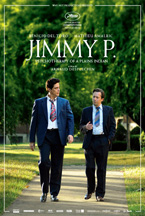 (Jimmy P: Psychotherapy Of A Plains Indian opens theatrically at The Elinor Bunin Munroe Film Center at the Film Society Of Lincoln Center on Friday, February 14th, 2014 and on VOD on February 20th, 2014 on various platforms. Visit the IFC Films website to learn more.)
(Jimmy P: Psychotherapy Of A Plains Indian opens theatrically at The Elinor Bunin Munroe Film Center at the Film Society Of Lincoln Center on Friday, February 14th, 2014 and on VOD on February 20th, 2014 on various platforms. Visit the IFC Films website to learn more.)
I love talking movies with Arnaud Desplechin. The care and artistry he puts into every one of his films creates a platform for deep analysis and conversation about his work, and he never disappoints. His new film Jimmy P: Psychotherapy Of A Plains Indian, which re-teams him with Mathieu Amalric and features a commanding performance by Benicio del Toro, has been somewhat misunderstood by American critics since its debut at Cannes last year. I sat down with Desplechin during his visit to the New York Film Festival last October to discuss the film and continue an ongoing conversation about his work, some of the finest in the modern cinema.
Hammer To Nail: The first thing to talk about with this film is the book Reality And Dream: Psychotherapy of A Plains Indian by George Devereux. Can you talk about how you found this book and what inspired you to make a film from such an unlikely source?
Arnaud Desplechin: The book is in two parts. You have the very theoretical part in the opening chapters, but when I bought the book I opened it to the middle and I found these dialogues which, like Madelene says in the film, looked much more like a theatrical piece or a play than a psychological treatment. It was just the dialogues between the patient and the analyst and I thought it was fantastic because I realized you had this process of psychoanalysis presented verbatim, which is fairly unique in the history of psychoanalysis. And what I loved in reading the forward of this book was that it was not for some noble reason that we had this record, but it was for a very humble reason; these two guys were bored to death in Topeka, far from home the two of them, one being far from Montana and the other being far from New York, and so they had nothing to do but work together. And so, I fell in love with these two characters who are two outsiders, but who are very different, opposites; you have the “savage”, who is the shrink, and you have the very “civilized” man, who is the Native American. I loved this confrontation between these two temperaments and I thought it was fantastic material for a film.
H2N: This is not the first time you’ve dealt with psychoanalysis in your films. It’s almost a common thread; there are those great scenes between Catherine Deneuve and Mathieu Amalric in Kings and Queen, etc. In your films, mental health “issues” are used as a way to punish outsiders, to keep them separated from society.
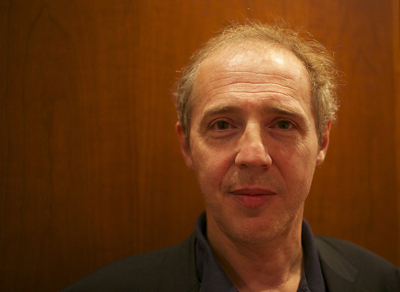 AD: I guess it is a threat. To me, it is the threat of madness. Even if it is expressed in a comical way like in Kings and Queen where the character is not that mad but is very reasonable in an odd way, still, there is a threat. In La Vie Des Morts you have the question of whether this cousin killed himself through madness or some other reason, so it’s always a threat which is surrounding the characters; will they cross the frontier between mental health and mental disease? I guess it is something I have improved in my own life, you know, this fear of becoming “mad”, which is the biggest threat I can imagine.
AD: I guess it is a threat. To me, it is the threat of madness. Even if it is expressed in a comical way like in Kings and Queen where the character is not that mad but is very reasonable in an odd way, still, there is a threat. In La Vie Des Morts you have the question of whether this cousin killed himself through madness or some other reason, so it’s always a threat which is surrounding the characters; will they cross the frontier between mental health and mental disease? I guess it is something I have improved in my own life, you know, this fear of becoming “mad”, which is the biggest threat I can imagine.
H2N: What creates that fear in you? There is this tradition between artists and madness; a lot has been written about schizophrenia and the creative process…
AD: I can only answer this in a concrete way by referring to my films, not in an abstract way. It’s terrible because in this film, you have in Jimmy, who is simply suffering from headaches, simple headaches, but it starts to become more than that; he starts to lose his hearing, he starts to lose his vision and because of this he says, “I don’t know whether I am awake or asleep.” And then, the hospital says, “This guy is mad and you have to put him in jail.” All because of this one line he says. And suddenly, the guy can be declared mad. You were mentioning schizophrenia; a friend of mine, who is a psychiatrist, was explaining to me that from time to time he meets schizophrenic cases and he would warn them, “Okay, right now you’re stable, but I know, because I have studied, that you are suffering from schizophrenia. We can’t cure this. And this also means that one day, you will have an hallucination, and see, for example, a dog transforming itself into a devil or something way out. But don’t worry, it is because of your disease.” And I said to him, “Come on! Don’t worry?! How can you not worry about that?” (laughs) So, yes, there is a very thin line between mental health and illness.
H2N: And what about you in your day to day work? I don’t know what your process is in terms of your day to day writing, filmmaking, etc. When you are working on these stories, do you feel you have to personally grapple with that? Not that you might be ill, but you are grappling with that line in others…
AD: I think that it cures me. Life and jogging are curing me (laughs), because it is a very boring practice that I love. I love writing, which is a very long process and very dull and stern, but I love it because it brings me to reality. You have to work on the scenes and you have to make them spectacular. So, there is nothing mythic, nothing mad about the writing process or preparing a film; it’s all so practical, you know? That is my favorite moment in making a film—when you are creating and assembling everything during the prep, which is the dullest moment of the making of a film. But it’s my favorite moment because suddenly all of your ideas are coming to life, it’s very exciting. But it’s a very, very dull process before that, I think.
H2N: Another thread in this film that ties it closely to your previous work is the idea of family and this terrible obligation to his family that is haunting Jimmy—his daughter, his dead ex-wife, although he considers himself a widower, his sister. This is in all of your films, this struggle between someone struggling to be who they are fighting against who they feel obligated to be. In the book, these realizations about his sister, his mother help lead him to an understanding of himself. Can you talk about how you translated this into the film?
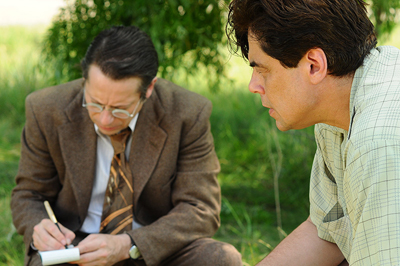 AD: This is what I found in the book as well. I was talking to Mathieu (Amalric) about this and I remember him telling me, “You will be in big, big trouble with this film. It’s a double portrait—it’s you as a mad shrink, but it’s also you as Jimmy.” So, he was perhaps asking me if I would identify myself to Jimmy or to him, the character of Devereux he was playing. I am not sure which he would have preferred, but the thing that I love with Jimmy is his fear of women. The fact that his sister is so nice, but she’s essentially fathering him—she’s not mothering him at all. She’s bringing him to the hospital, but in a very nice way, she’s putting him in jail. So, you have the threatening figure of the older sister, which is a thing I already filmed in La Sentinelle—I don’t know where it is coming from. Sure, I have an older sister and a younger sister, so I don’t know if I am thinking about my older or younger sister, but it’s something that I love.
AD: This is what I found in the book as well. I was talking to Mathieu (Amalric) about this and I remember him telling me, “You will be in big, big trouble with this film. It’s a double portrait—it’s you as a mad shrink, but it’s also you as Jimmy.” So, he was perhaps asking me if I would identify myself to Jimmy or to him, the character of Devereux he was playing. I am not sure which he would have preferred, but the thing that I love with Jimmy is his fear of women. The fact that his sister is so nice, but she’s essentially fathering him—she’s not mothering him at all. She’s bringing him to the hospital, but in a very nice way, she’s putting him in jail. So, you have the threatening figure of the older sister, which is a thing I already filmed in La Sentinelle—I don’t know where it is coming from. Sure, I have an older sister and a younger sister, so I don’t know if I am thinking about my older or younger sister, but it’s something that I love.
There is also this thing that always fascinates me and it’s a hidden motif for Jimmy: his bad relationship with his mother and not speaking about her. It’s like the opening lines with Devereux; the shrink is guessing the Native American word for this, and he says, “Your mother was a manly hearted woman?” So, there is this very severe mother, plus this contradiction that while she was severe, she also had intercourse in front of Jimmy after the death of her husband. You have this discourse coming from women for Jimmy and he has to recover from that, so we have this scene where he is listing all of his traumas, which I think is very important, because we see him making some kind of progress.
But then, you have this scene that is in the book and a scene I really love; it’s probably the deepest reason for me to adapt this book. It is where Jimmy gives an almost novelistic account of his life, saying, “This is the way I lived and this is the long story about Jane” (his ex-wife). At this point in his psychoanalysis, Jimmy is allowed to be his own narrator, able to tell us the “novel” that he has been through and in that sense it seems to me he is very close to Thomas Hardy’s characters, feeling that they have been cursed and suddenly being able to explain their experiences in the form of a novel of which they are the heroes. So, it’s very heartbreaking, he thinks, “I fucked up everything and this is how it happened.” You have this massive novel appearing in the middle of this film. But I don’t think it’s necessarily the deepest session he has with Devereux, it’s just the one time he is allowed to be his own narrator. Period. I am sure that five years later, he will have a different way of expressing the “novel” he has been through, but at this moment, this is the way for him to recount his own story.
H2N: And in the film, there is no great “revelation” that he discovers through this narrative act that allows him to feel he has overcome his past, it is just telling the story—the process is the cure.
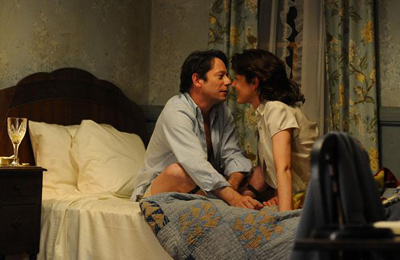 AD: It is something I worked a lot on with the co-writers, because it’s something that annoys me in films dealing with psychoanalysis, the idea of revelation. Am I too atheist to believe in any form of revelation? I guess I am. I don’t think that one day, I will go to a shrink, I will say one line, and suddenly I will realize, “This is what I’ve been through!”—a hidden trauma or whatever. I don’t think this exists inside of me or of any character, something hidden that comes to light and suddenly, you are cured. I don’t believe in any revelation or magic tricks. I think it’s just a process. So, how to avoid this in the script, without the big moment, the tears? It’s not that I don’t like it; I do like it in other films, but I don’t buy it for me or my films.
AD: It is something I worked a lot on with the co-writers, because it’s something that annoys me in films dealing with psychoanalysis, the idea of revelation. Am I too atheist to believe in any form of revelation? I guess I am. I don’t think that one day, I will go to a shrink, I will say one line, and suddenly I will realize, “This is what I’ve been through!”—a hidden trauma or whatever. I don’t think this exists inside of me or of any character, something hidden that comes to light and suddenly, you are cured. I don’t believe in any revelation or magic tricks. I think it’s just a process. So, how to avoid this in the script, without the big moment, the tears? It’s not that I don’t like it; I do like it in other films, but I don’t buy it for me or my films.
H2N: How do you feel audiences have received that? People are so conditioned to expect that moment and this film refuses to give it to them.
AD: I guess they respond to it because the film is surprisingly sweeter and more gentle than the “sturm und drang” of many of the films that deal with psychoanalysis. And the film does have a revelation in it, during his relapse, when he starts having his headaches again and then he’s cured because, as the doctor tells him, he will have relapses all his life. And that’s the cure, the fact that this is his life and life will happen to him. Headaches, love, boredom—it will all happen and now that he can face that this is his life. That is his cure. That’s his revelation.
H2N: This is the second film you’ve made in English, another adaptation, this time a French writer writing in English, and while the film focuses on the dialogues, the book itself begins with an entire ethnographic study that traces, in a very political way, the treatment of Native Americans by predominantly white American culture. That is addressed in the film in a more subtle way. How did you weave these two things together in the script?
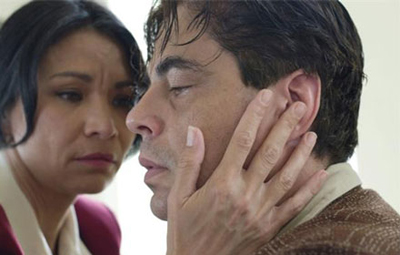 AD: The book is very elliptical, because you really have to piece together the chronology of events, as they are so interrelated and told through dialogues, ethnography, etc. It was a challenge for us. For example, the book tries to hide Jimmy’s identity, so it refuses to identify his tribe, but we wanted to know who he really was, which tribe, so we had to uncover that he was a Blackfoot from Browning, Montana. In the book, he tells us Jimmy’s mother lived near the grave of a popular writer, so of course, we had to find the grave, and that allowed us to find Browning. You also mentioned a French writer writing in English, and so we knew that Devereux’s wife had to have a great influence over the text because his English was worse than mine (laughs). So, I started by doing the adaptation in French, and then using the book, we translated that, but I didn’t want to do it like Esther Kahn where we simply translated the French script into English; I wanted to adapt the script with a co-writer, so Kent Jones came on with me.
AD: The book is very elliptical, because you really have to piece together the chronology of events, as they are so interrelated and told through dialogues, ethnography, etc. It was a challenge for us. For example, the book tries to hide Jimmy’s identity, so it refuses to identify his tribe, but we wanted to know who he really was, which tribe, so we had to uncover that he was a Blackfoot from Browning, Montana. In the book, he tells us Jimmy’s mother lived near the grave of a popular writer, so of course, we had to find the grave, and that allowed us to find Browning. You also mentioned a French writer writing in English, and so we knew that Devereux’s wife had to have a great influence over the text because his English was worse than mine (laughs). So, I started by doing the adaptation in French, and then using the book, we translated that, but I didn’t want to do it like Esther Kahn where we simply translated the French script into English; I wanted to adapt the script with a co-writer, so Kent Jones came on with me.
It was so lovely; I sent him a rough draft of it, I had not done the ending, there were gaps here and there, it was unfinished. It still felt French and that I had to find the right language for it, that made it feel American. So, I sent it to Kent and said, “Could you help me find a writer you think could understand the period and the script?” and I mentioned I was on deadline. I didn’t hear from him for a day and a half and I was thinking, “Come on, this guy was supposed to be my friend!” And then I got a very short e-mail back saying, “You might never forgive me, but I had to do this…” and he attached the whole script that he had adapted and re-translated. So, I assumed that was a proposal from him, and that’s how we undertook the second step of making the script together.
As for the politics of race, Kent really was the one, this is a very American kind of thing. Kent showed me The Exiles, which I didn’t know, but is a film that just broke my heart because it was pre-1967, and the goal was not to take pride in your roots, but to assimilate. The dream was to become Elvis Presley. So, Jimmy had this shitty life before the treatment and after, and it’s a big part of the book, he still had a tough life. The politics didn’t change, but dealing with the fact that his life will be tougher than a Caucasian life, that’s part of the cure. So, we looked at The Exiles, I looked at John Huston’s Let There Be Light which, again, being French, I didn’t know this film…
H2N: Did you look at Paul Thomas Anderson’s The Master, which also drew heavily on Huston’s film?
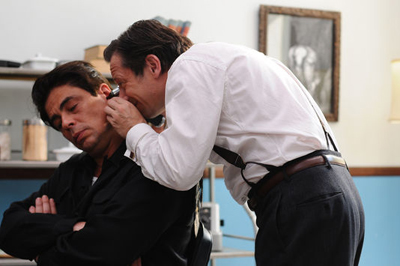 AD: For sure. It was fascinating to me, the difference, because you have two characters dealing with words, but in The Master, you have a magician. In my film, Devereaux is not a magician, he is not a shaman, he wants to be equal with his partner, he doesn’t want to be “The Master.” But The Master is fantastic, you are depicting a relationship where they are demonstrating how to empower someone, and in Jimmy P., it has nothing to do with empowerment. It’s really about friendship. But the influence of Let There Be Light, I just loved it.
AD: For sure. It was fascinating to me, the difference, because you have two characters dealing with words, but in The Master, you have a magician. In my film, Devereaux is not a magician, he is not a shaman, he wants to be equal with his partner, he doesn’t want to be “The Master.” But The Master is fantastic, you are depicting a relationship where they are demonstrating how to empower someone, and in Jimmy P., it has nothing to do with empowerment. It’s really about friendship. But the influence of Let There Be Light, I just loved it.
H2N: No one I know has more passion for American cinema than you, and I know shooting this film in Topeka (where the original story took place) was a priority for you, but you never were able to shoot there. How was your American filmmaking experience and what did you take from it?
AD: Well, we didn’t get to shoot in Kansas because the original hospital was destroyed. During the writing, I thought it would be foolish for me to worry about making an American film or not making one, my task was to stay in a small office in Paris and to write the material, which was so abstract. I had to transform it into something more cinematic, build the strings that would connect the writing to these dreams and memories and create something for the cinema. I didn’t want to do anything too exotic. Really, truly, each day I was saying to the French co-writer that we have to recall that this is just like a doctor in Roubaix treating a patient. I’m not speaking about something exotic, I am speaking about my own life.
That said, I thought it was important to send someone to give me information about the locations in the story, so I sent a friend to take some photos and go through the archives in Topeka, to meet the last living people who knew Devereux. Then they went to Montana, to see what was there, and I always asked them not to send me exotic details, but very practical details.
I have this fear of exoticism, I think it is dangerous. I think it is a another way to see, but not for me. I was never thinking, “I am making an American film.” I mean, I’m French and I was coming in with Mathieu, who is like my brother in cinema, so we couldn’t pretend, like Devereux, that we were American. I’m not pretending anything, so I think the film has one step in America, one step in France and one step in Puerto Rico (where Benicio Del Toro comes from). So, I feel the film is a mixture of influences and roots. It becomes a mix of identities, in the end.
H2N: In this film, it’s really George who is the outsider. He’s a revolutionary in a lot of ways, an outsider to science, to medicine, to America, his faith. Mathieu took this and made a bright, eccentric character out of this, but how did you conceive of George? You earlier mentioned you consider him “the savage”…
 AD: There is also an opposition between the two characters concerning the question of identity, which I loved the first time I read the book. It’s in the opening lines; as soon as Devereux arrived in France, despite being Jewish, he was baptized. He transformed himself from a Jew to a Catholic, and then from a Catholic into a nothing, from a Hungarian to a Romanian, from a Romanian to French, then moved from France for a time to Vietnam, and from there he became American. He was always trying to escape into assimilation through shifting his identity. In an odd way, he was always using masks to disguise himself, yet here he is recommending to his friend Jimmy to recognize his own identity, that Jimmy should be proud of being Native American. But I always want to say to Devereux, “Come on, you’re saying that when you are hiding the fact that you’re an Eastern European Jew!” It’s very strange.
AD: There is also an opposition between the two characters concerning the question of identity, which I loved the first time I read the book. It’s in the opening lines; as soon as Devereux arrived in France, despite being Jewish, he was baptized. He transformed himself from a Jew to a Catholic, and then from a Catholic into a nothing, from a Hungarian to a Romanian, from a Romanian to French, then moved from France for a time to Vietnam, and from there he became American. He was always trying to escape into assimilation through shifting his identity. In an odd way, he was always using masks to disguise himself, yet here he is recommending to his friend Jimmy to recognize his own identity, that Jimmy should be proud of being Native American. But I always want to say to Devereux, “Come on, you’re saying that when you are hiding the fact that you’re an Eastern European Jew!” It’s very strange.
But it’s also quite moving; one of them is dreaming he is no one—there was a line from The Odyssey we wanted to use that we ended up cutting from the film, which, when they ask Ulysses his name he replies, “I am no one.” In the film, there is this motif of the hidden name; Jimmy’s hidden name is his Native American name. So there is this conflict of trying to escape identity and the quest to recognize identity.
I don’t think there is a better way to be in life. I guess I am always trying to escape my own identity, but I also think recognizing who I really am can be good, too. The opposition between these two things… to phrase it in a brutal way, I always think of when I started the script, I wanted to depict the conflict, so I said to the producer, “This is a film about a bad Jew who is meeting a bad Indian. They want to assimilate to America and are refusing their own identity.”
H2N: We’ve discussed masks before in your work, it is a prevalent theme in all of your work, something that always seems to attract you. What do you think, on a creative level, fascinates you about masks, about hiding identity?
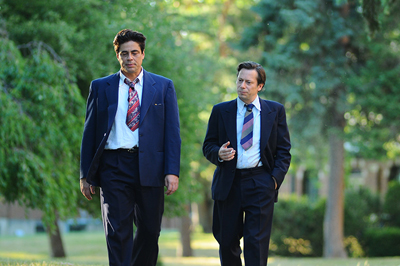 AD: I guess it brings me back to Philip Roth. I don’t think that I exist. Very deeply, I don’t think that “I” exist. I have values, characteristics, but I think, fundamentally, what makes me a human being is my attempt to try to look like a human being. But I don’t think in the morning that I wake up a human being. I think I wake up as nothing, and during the day, I am trying to construct myself and to present myself as a human being, using different kinds of masks to appear as “something” when actually, when I wake up, I’m just a baby, crying and desperate.
AD: I guess it brings me back to Philip Roth. I don’t think that I exist. Very deeply, I don’t think that “I” exist. I have values, characteristics, but I think, fundamentally, what makes me a human being is my attempt to try to look like a human being. But I don’t think in the morning that I wake up a human being. I think I wake up as nothing, and during the day, I am trying to construct myself and to present myself as a human being, using different kinds of masks to appear as “something” when actually, when I wake up, I’m just a baby, crying and desperate.
H2N: Who do you think you are at that primal moment of waking?
AD: Something unformed. After that, I try to assemble myself and think, “What does a decent human being do in this circumstance?” So, I try to be decent, I try to make a decent self, but I don’t believe there is one truth that is “myself.” I guess that I am a series of characters that I am impersonating.
A big smile and a raise of the eyebrows, as if to say “..how about THAT?”, brings an end to our interview.









